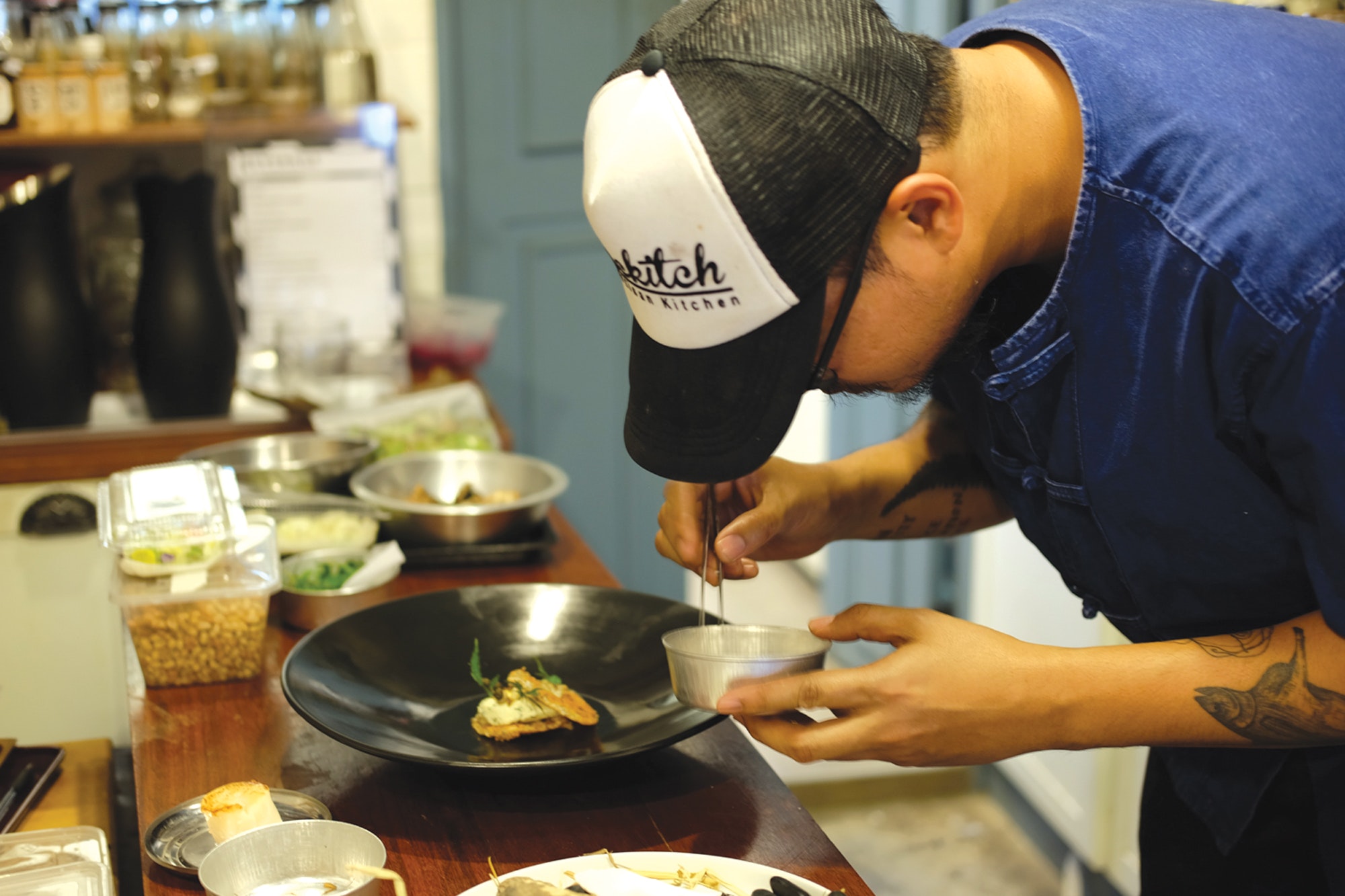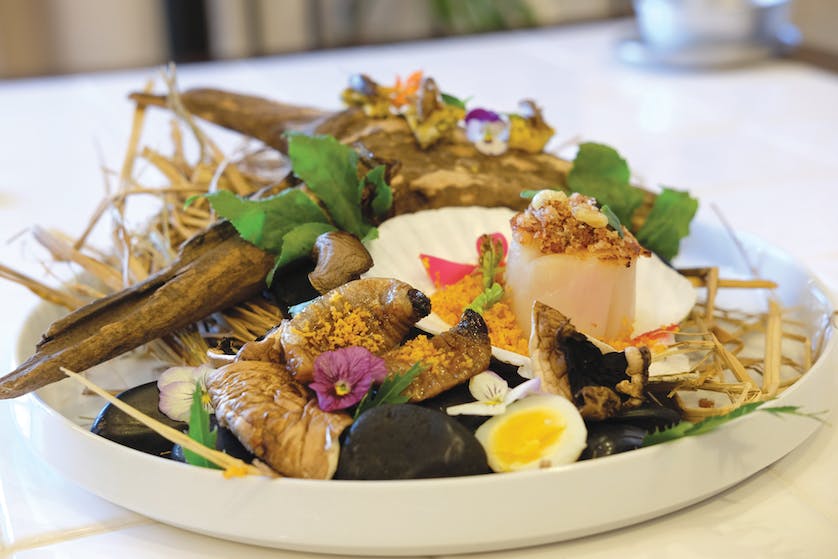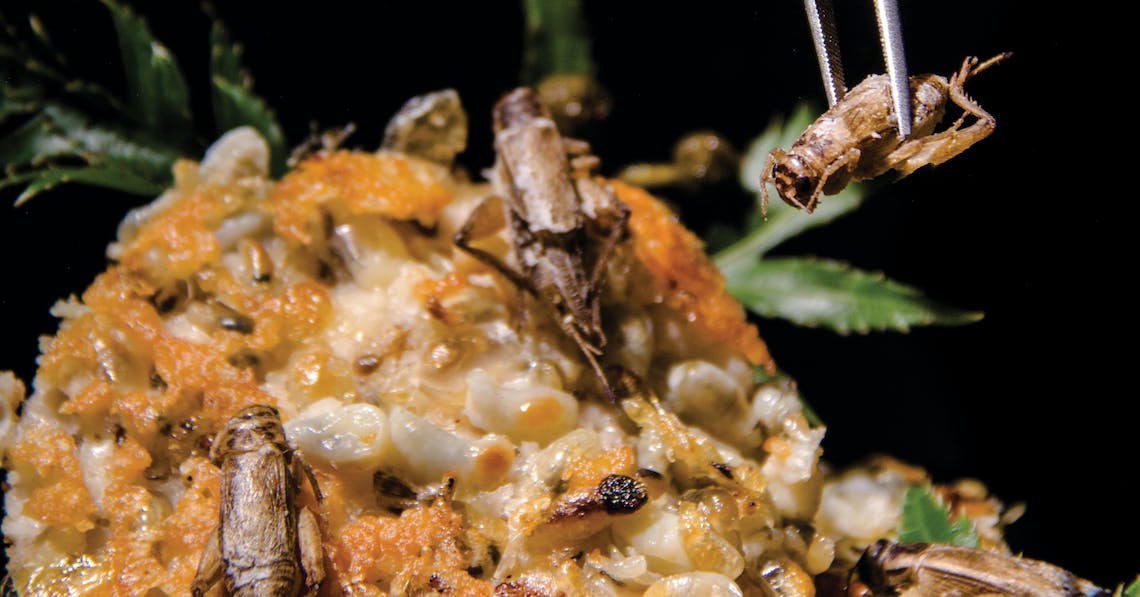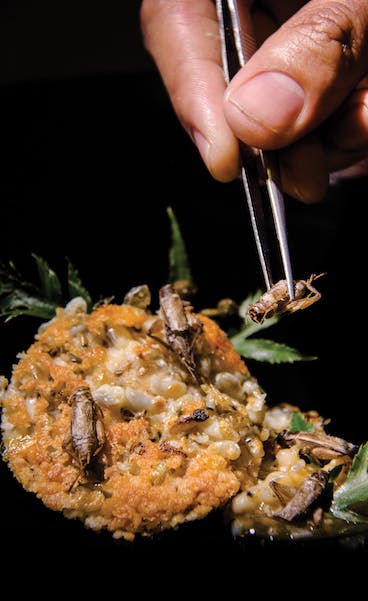
Naruemon ‘Anne’ Chomdock, a food blogger who grew up in a small town outside of Chiang Mai, has eaten many different kinds of insects in her life. She has happy memories of collecting them as a child. “Mang mun is one insect we ate. After it rains, if you’re a kid and you’re running around, you catch them by the wings from under the streetlights and grab them and put them in your bottle. With mang mun you can make a dip, or stir fry with salt,” she said, smiling in fond memory.
She and her friends made games out of hunting crickets, competing to see who could find the most. Her family would then clean the insects for eating. “To prepare crickets, you first put them all in water. Then you clean them by removing their digestive tracts,” she said. “There’s many ways to cook them. You can make my dad’s recipe, it’s easy. He dumps live crickets into eggs and cooks them. It’s like a cricket omelette. Crunchy and very tasty.”
Her family incorporated insects into their diet because they understood their nutritional value: most insects are richer in protein and magnesium than beef, pork or other animal proteins. As a complete protein, they contain all amino acids. “We were trying to find protein substitutes,” Anne said. “Insects were a source of protein that we had.”
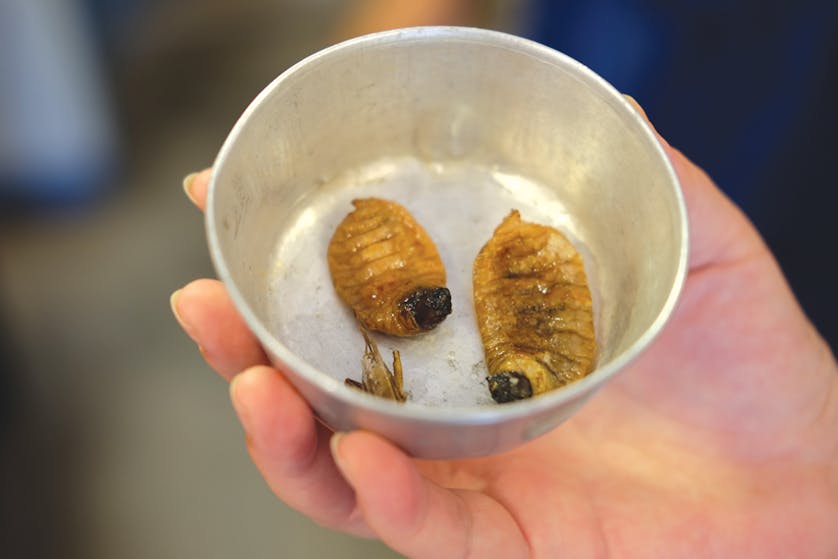
Even so, she understands why not everyone would be so eager to try these six-legged snacks. “For other Thai people, they probably think it’s gross,” she said. “Only people who are my age have grown up eating insects. The younger generation, they don’t eat insects anymore because they have other options. Before, when we were young, meat was really expensive. Now, Thai people are eager to try more western food, Japanese food and other countries’ food.”
There are a number of up-and-coming companies in Thailand anticipating that more people will become interested in insect eating, and who are selling insects as food or using them as ingredients. One Bangkok-based company called Bugsolutely makes cricket pasta, and another, Hiso Snack, sells packets of flavoured crickets in 7-Elevens across the country.
One of the innovative insect enterprisers in Chiang Mai is Michi Abe, founder of ProPro. His company has been around for less than a year, but his passion for the potential of this industry lights him up. He’s thrown himself into every form of research available to him, from perusing case studies about insect protein to raising crickets himself to see what it would be like.
Currently on the market are ProPro’s three protein bars, in which a main ingredient is ground up crickets. Abe said, “We use cricket powder, so you’re not going to have the antennae or the legs popping out. It has the texture of flour, so it’s indistinguishable in that sense.”

If consumers wouldn’t notice the cricket powder, why use it? For Abe, it’s not a gimmick. In fact, he said, “I was fearful of it becoming a novelty product. I wanted it to become part of something where eventually it could be, ‘Do you want chicken, tofu or crickets?’” He’s hoping his company can be part of something bugger – er, bigger.
“In a real traditional historical context, edible insects were used in a much wider range of different foods in Thailand,” Abe said. “Now, I would say there are a few ant egg soups and some laabs and stuff using insects, but primarily they’re just deep fried and served as a beer side dish. So some of that culinary tradition is being lost. If ProPro can play a role in modernising edible insects and making them a more mainstream ingredient, that would be a great role for us to play.”
A cultural revival of insect eating in Thailand could make a substantial impact on the environment. On a local level, the pressing nature of this issue in Chiang Mai becomes apparent just from walking outside and breathing in the air pollution; much of this city’s seasonal smoke comes from burning crops used to feed livestock.
Crickets are a more efficient source of protein and require less land and feed than animal livestock. On a global scale, a report from the European Parliamentary Research Service estimates that almost 80% of the world’s agricultural land is currently used for livestock feed. The report also projects that the world will need to increase food production by 70% to support a global population of 9 billion by 2050.
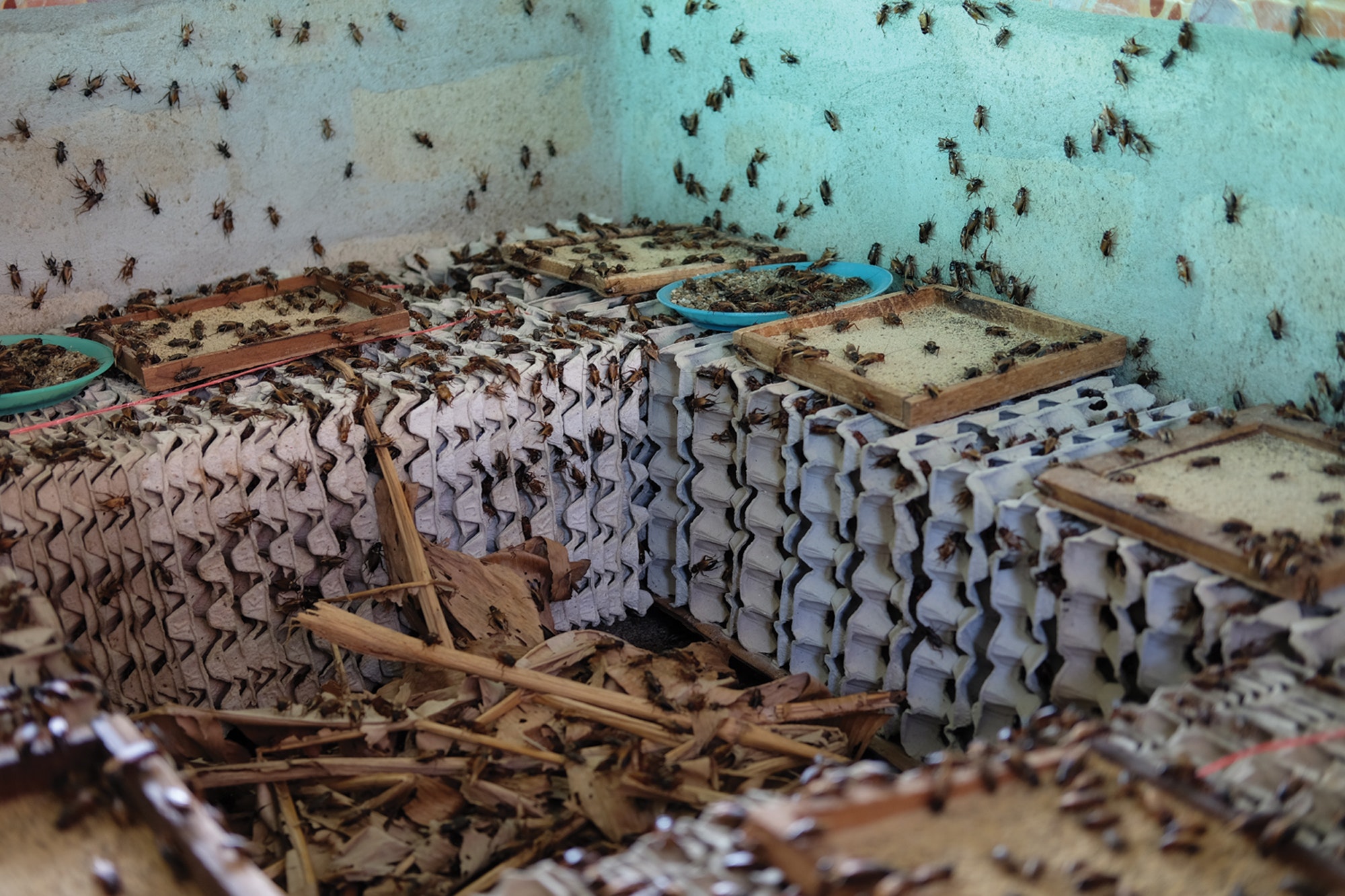
Crickets could be the more sustainable and efficient protein source the world needs. According to research from the Food and Agriculture Organisation of the United Nations, crickets are twice as efficient in converting feed to protein as chickens, four times more efficient than pigs and twelve times more efficient than cattle. Incorporating the greenhouse gases that livestock – particularly cattle – produce and the amount of water they consume, the benefits of insects become ever more apparent. Even in comparison to soy, crickets require less land and fertiliser to raise, and are richer in protein and amino acids.
Making decisions about what to eat while considering the broader environmental impact of different food sources can seem daunting, but taking small steps can make an impact over time. Abe calls crickets the “gateway bug,” since something about the cuteness of cartoon crickets has made them seem less intimidating for people than other bugs. He also finds Thailand to be suited for raising crickets, “because there’s a tradition of it already, and climate-wise, food-wise, everything is already there.”
International investors have recognised this as well: “Thailand’s already kind of a known name for edible insects,” said Abe. “I’ve overheard stories of different insect farms that have agreements to only supply to certain companies. Exo [an American insect protein bar company] was out here recently looking for different sources.”
Abe is hopeful that these trends continue. “I think internationally, Thailand really could be big a player in this burgeoning market,” he said. He sees the job creating potential of the insect industry. “Rural areas are losing their young to middle-aged labour force because they’re going into cities. So you’re left with very young and very old people. A lot of those communities are rice farming based, which is very labour intensive. But cricket farming can be an alternate source of income, since it’s super cheap to start compared to trying to raise pigs or something. The barrier of entry is quite low. Long term, I think it could be a driver for job creation in rural areas.”

Siriporn Jumkaew, 50, has enjoyed success after turning from traditional farming to cricket farming. She started her humble farm eight years ago when her daughter, studying at Mae Jo University, gave her the idea and tips on setting up a cricket farm. Today, she stands proud as she gazes at rows of concrete troughs filled with egg cartons swarming with what seems like millions of crickets at various stages of their life cycle. The chirping provides a constant hum as Siriporn lifts up the blue netting on their boxes to check on their water and feed them coconut husks.
Siriporn sells crickets for 200 baht per kilo, and she’s able to make a profit of about 3,000 baht each day. She said, “My daughter was making about 10,000 baht per month at her government job. I told her to come work for me and I’d pay her 20,000 per month, so now we’re business partners. And I’m now buying and investing in property for my children.” The tiny critters she’s farming have provided a big payoff for her and her family.
Internationally, organisations are taking steps to establish regulations and define best practices for the farming and distribution of edible insects. AFFIA, the ASEAN Food and Feed Insects’ Association, is an organisation that was founded recently to serve as a collaborative platform for the edible insect industry. They pool resources to assist insect farmers and edible insect companies to access global markets and define regulatory standards.
The Thai government is financing efforts to use insect protein in new ways. Chef Black, who runs Blackitch Artisan Kitchen with his wife Anothai Pichaiyuth, was awarded funds from the National Innovation Association to develop different culinary sauces from insects. “I’ve made soy sauce, fish sauce, salt and chilli paste with insects,” he said. “I will start next month working on a silkworm sauce. I like to make new ways to serve clean protein to customers.”
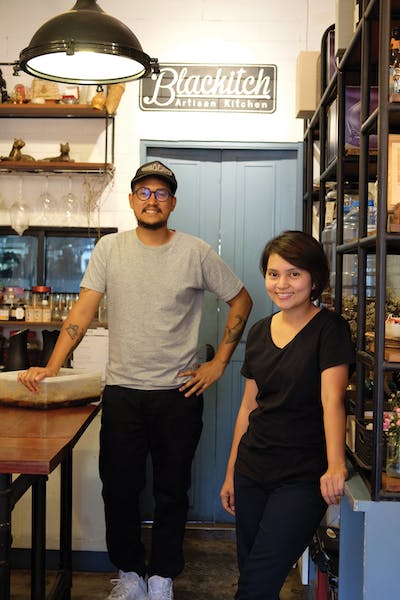
Citylife cheekily asked Chef Black to show us what he could do with insects, and we spent a creepily crawlily fascinating afternoon in his kitchen, watching him prepare exquisite dishes made with these unorthodox ingredients. On the counters in his kitchen rest a number of jars filled with fermenting insects, and while they may resemble something from Frankenstein’s lab, their savoury contents provide crispy piquant notes to his intricate dishes. These flavours are catching the attention of the world of high-end cuisine: Chef Black has worked with a Japanese chef to develop an insect-based soy sauce to send to the internationally acclaimed two-Michelin-starred restaurant Noma in Denmark.
Chef Black grew up eating insects, and uses them in his restaurant now for their high protein content, and because they allow him to serve his guests something unexpected. He said, “I served a dish with an insect. And customers told me, ‘Chef! There’s an insect in the dish!’ And I had to tell them no, that’s the dish. Do you want to try it? And they said why not!”
The chef’s creativity in the kitchen, the cricket farmer’s successful business, and the protein bar entrepreneur’s environmental and nutritional interests all reflect the benefits and potential ensuing trends of a burgeoning edible insect trade. Those who have eaten insects all their lives may shake their heads and say, “Obviously.” But for the rest of the world who is just starting to catch up, the future of insect eating may provide solutions to the world’s growing food needs that are encockroaching – er, encroaching every day.
